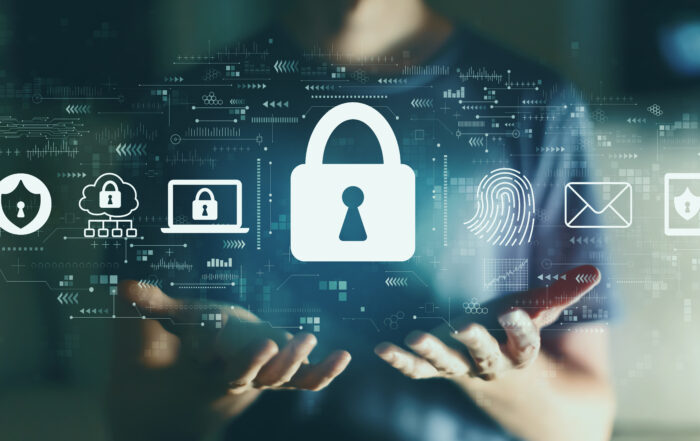Ephemeral Rotation Is Key to Success: A Look at Ephemeral vs. Static Digital Credentials

Digital credentials are the digital equivalent of paper-based credentials, such as a passport, driver’s license, membership certificate or a ticket that grants you access to a show or event. Just as those paper credentials provide proof of qualification or clearance, digital credentials prove something about their owner and may also refer to passwords or other means of authentication. Both paper/physical and digital credentials may contain personal information. Cybersecurity efforts help to safeguard digital credentials from attackers.
Attackers commonly use phishing techniques to get their victims to reply to fraudulent messages and reveal sensitive information to steal credentials. Email addresses often look real and are sometimes only a letter or punctuation mark off from the legitimate address. Sometimes though, savvy attackers take over an email account rather than spoofing it.
Another tactic adversaries use is ransomware, a form of malware designed to encrypt files on a device, rendering any files and the systems that rely on them unusable. Ransomware attacks are shifting from malware (software intentionally designed to cause disruption) focused threats to more nuanced and sophisticated tactics. Sometimes the goal is data, other times it’s money, but it always results in devastation and destruction to some degree if the attacker prevails. This is where QWERX comes in.
How QWERX Solves for the Greatest Adversary
QWERX assumes the attacker is already inside your network, but it doesn’t matter. Since the QWERX encryption keys can be rotated very frequently — even in milliseconds — an adversary must precisely acquire all of the components simultaneously in the very moment of their creation to be useful, because in the next moment they will change. Even in the extraordinary circumstance that an adversary might successfully guess all of the components, they would only gain whatever information was being protected in that instant and gain no lasting advantage that could be extrapolated to any future instant. Possessing one or even most of the components without possessing all of them does an adversary no good.
QWERX’s unique solution has many elements that test current views on cyber defense tactics. One of those elements is the use of ephemeral credentials and ephemeral rotation to keep adversaries out.
Static vs. Ephemeral Digital Credentials
Static information is the most frequently used method for identifying someone and ostensibly providing security. As an example, most financial institutions will use your social security number for account origination and identity verification. Similarly, when these pieces of static, private information are compromised, static credentials can mean a great loss if they fall in the wrong hands. When digital credentials remain unchanged for long periods (that is, become static), those credentials are vulnerable and thus easy to steal. Static credentials are in use for long periods and must remain secret to be secure. This vulnerability breeds distrust. When static credentials on network devices are compromised, system components are insecure and it creates an unquantifiable risk.
How Static Credentials Work
How static keys work is pretty straightforward, and since secrecy is paramount to their use, they don’t work well when it comes to cybersecurity. In a traditional symmetric cryptosystem, involved parties share a common secret key used to both encrypt and decrypt data. These algorithms tend to be comparatively fast, but they cannot be used unless the involved parties have already exchanged keys. In systems involving many users who each need to set up independent, secure communication channels, symmetric cryptosystems can have practical limitations due to the requirement to securely distribute and manage large numbers of keys. Ephemeral keys (how QWERX changes the game) are more complex, offering more security, and at the same time are extremely user-friendly and adaptable for all organizations, regardless of size.
What Are Ephemeral Credentials?
QWERX uses ephemeral credentials, which are short-lived access credentials that are valid for as long as they are required to authenticate and authorize privileged connections. Ephemeral credentials are a game changer because ephemeral keys rotate constantly. QWERX uses a chaotic information matrix, a many-sided information store. Once we extract and convert chaotic information from its native analog form to a usable digital format, it is stored and managed consistently with the overall inherently ephemeral, dynamic nature of the QWERX environment. For this purpose, QWERX has adapted an off-the-shelf common data structure built around the online analytical processing concept of a multidimensional database. We only retain the core multidimensional structure of the database in its most nascent form. Ephemeral rotation is crucial to QWERX’s success.
How QWERX’s Technology Works
In the QWERX symmetric cryptosystem, the involved parties generate a common ephemeral key from instructions sent in the clear. Data is encrypted and decrypted using the locally generated key. The QWERX key generation does not require a math processor and is generated using a call response function with a dynamic, constantly changing, momentarily synched lookup table (LUT) using the patented QWERX dynamic data structure. QWERX is thus faster, stronger and more secure. With QWERX, there is no key exchange and no key retention. In practical terms, this means there is nothing to keep secret — nothing for an adversary to steal. Users can set up independent, secure one-to-one or many-to-many communications that are secure, even over insecure penetrated networks.
Ephemeral Rotation Is Key to Success
The greatest attacker is no match for QWERX thanks to how the company has radically revolutionized the cybersecurity landscape. QWERX’s patented authentication and encryption technology elevates cybersecurity by eliminating the risk of data breaches and improving the customer experience with ephemeral rotation. It doesn’t matter what attackers come up with next, because QWERX has every possible threat covered thanks to its exclusive blend of elements that create a shield that cannot be cracked. Contact us today to explore solutions for your organization.
Amanda Costello is a freelance journalist in Omaha, Nebraska. She has been published in AudioFile Magazine, The Omaha World Herald and CNN. You can view more of her work here.
Sources
CNN - Fake FBI Emails About a Sophisticated Attack Are Part of ‘Ongoing Situation,’ Agency Says
Cybersecurity and Infrastructure Security Agency (CISA) - Stop Ransomware
Cybersecurity Dive - Ransomware Groups Shift Tactics and Objectives
Forbes - Moving From Static Identity to Digital Identity
Guru 99 - What Is OLAP? Cube, Analytical Operations in Data Warehouse


